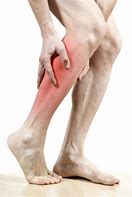
Muscle cramps-Why,reason,dificiency and cure
Muscle Cramps and Weakness –
These symptoms can be caused by various factors such as dehydration, electrolyte imbalances, overexertion, lack of stretching, or underlying medical conditions. Here are a few things you can try to alleviate these symptoms:
- Hydration: Make sure you’re drinking enough water throughout the day, especially if you’re physically active.
- Electrolyte Balance: Replenish electrolytes by consuming foods or drinks rich in potassium, magnesium, and calcium. Bananas, leafy greens, nuts, and sports drinks can help.
- Stretching: Incorporate regular stretching into your routine, both before and after physical activity, to prevent muscle tightness and cramps.
- Rest: Allow your muscles to rest and recover adequately after strenuous activity.
- Warm-Up and Cool Down: Gradually warm up before exercising and cool down afterward to prepare your muscles and prevent strain.
- Massage: Gentle massage can help alleviate muscle tension and improve circulation.
- Medical Evaluation: If your symptoms persist or worsen, it’s essential to consult a healthcare professional to rule out any underlying medical conditions or to receive appropriate treatment.

Magnesium deficiency : Can manifest in various signs and symptoms, affecting different systems in the body. Here are some common signs of magnesium deficiency:
- Muscle Cramps and Spasms: One of the most noticeable signs is muscle cramps, spasms, or twitches. This occurs because magnesium plays a crucial role in muscle function and relaxation.
- Fatigue and Weakness: Magnesium is involved in energy production within cells. Low levels of magnesium can lead to feelings of fatigue and weakness.
- Irregular Heartbeat: Magnesium is essential for maintaining a normal heart rhythm. A deficiency can cause palpitations, arrhythmias, or irregular heartbeat.
- Muscle Weakness and Tremors: In addition to cramps, muscle weakness and tremors can occur due to insufficient magnesium levels.
- High Blood Pressure: Magnesium helps regulate blood pressure by relaxing blood vessels. Low levels of magnesium may contribute to hypertension.
- Mood Changes: Magnesium plays a role in neurotransmitter function and mood regulation. Deficiency may lead to symptoms such as irritability, anxiety, or depression.
- Nausea and Vomiting: Some people with magnesium deficiency may experience gastrointestinal symptoms like nausea, vomiting, or loss of appetite.
- Headaches and Migraines: Magnesium deficiency has been linked to an increased risk of headaches and migraines. Supplementing with magnesium may help reduce the frequency and severity of these headaches in some individuals.
- Insomnia or Poor Sleep Quality: Magnesium is involved in the regulation of neurotransmitters that influence sleep. Low levels of magnesium may contribute to insomnia or poor sleep quality.
- Muscle Weakness and Fatigue: Magnesium is necessary for muscle contraction and relaxation. Deficiency can lead to muscle weakness and fatigue.
- Numbness and Tingling: Magnesium deficiency may cause tingling or numbness in the extremities, known as paresthesia.

Certainly! Including magnesium-rich foods in your diet can help ensure you meet your daily requirements. Here are some excellent food sources of magnesium:
- Leafy Greens:
- Spinach
- Kale
- Swiss chard
- Collard greens
- Beet greens
- Nuts and Seeds:
- Almonds
- Cashews
- Pumpkin seeds
- Sunflower seeds
- Flaxseeds
- Chia seeds
- Legumes:
- Black beans
- Kidney beans
- Chickpeas (garbanzo beans)
- Lentils
- Peas
- Whole Grains:
- Brown rice
- Quinoa
- Oats
- Buckwheat
- Whole wheat
- Fruits:
- Avocado
- Bananas
- Figs
- Dates
- Prunes
- Seafood:
- Salmon
- Mackerel
- Halibut
- Tuna
- Sardines
- Dark Chocolate:
- Opt for dark chocolate with high cocoa content to get a magnesium boost.
- Dairy Products:
- Milk
- Yogurt
- Cheese
- Tofu:
- Tofu and other soy products can be good sources of magnesium.
- Vegetables:
- Broccoli
- Brussels sprouts
- Green beans
- Artichokes
- Edamame
- Fish: Fatty fish such as salmon and mackerel contain magnesium along with omega-3 fatty acids.

Incorporating a variety of these foods into your meals can help you maintain adequate magnesium levels. Keep in mind that certain cooking methods, such as boiling, can lead to a loss of magnesium, so opt for cooking methods that preserve the nutrient content whenever possible. If you’re concerned about your magnesium intake, consider talking to a healthcare professional or registered dietitian for personalized advice.










Leave a Reply